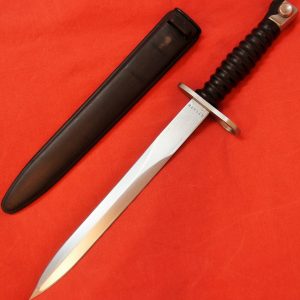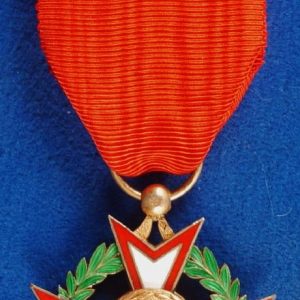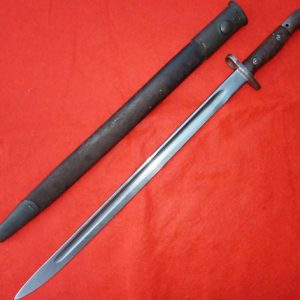Offered is a British War Medal to Private Bawden, 5th Pioneer Battalion A.I.F, who whilst serving was twice Wounded in Action (Gas) 1918.
British War Medal, impressed named 3077 PTE. A.P. BAWDEN. 5-PNR.BN. A.I.F. Comes with copies service papers.
Albert Patrick Bawden was born 1898 at Menzies Western Australia. Enlisted 3/9/1916 Kalgoorlie, Occupation Labourer. Regimental number 3077, 7th reinforcements, 5th Pioneer Battalion.
Embarked Fremantle HMAT Argylshire 9/11/1916 to England. Landed France 28/3/1917. To 5th Pioneer Battalion 21/4/1917.
24/4/1918 Gassed to Hospital (Second Battle of Villers-Bretonneux). 31/8/1918 Gassed to hospital. Returned to Australia 7/2/1919.
1917: The battalion took part in the pursuit of German forces as they withdrew towards the Hindenburg Line in early 1917, working to extend the 5th Division's supply railway from Ginchy to Bealencourt in March. Throughout April they extended the line around Fremicourt towards Vaulx–Vraucourt, providing the means for the Allies to bring up guns and ammunition with which to lay down a heavy bombardment on the Hindenburg Line. The following month the battalion supported the Second Battle of Bullecourt, assisting the British 258th Tunnelling Company to dig a defensive mine to the east, suffering 39 casualties during the fighting. Their next major action came around Ypres later in the year. By September, the pioneers were working to construct plank roads behind the lines around Zillebeke and Hooge to make the roads passable for artillery and supplies in an effort to prepare for the coming offensive. Casualties during the fighting around Polygon Wood cost the battalion 81 casualties.
In early 1918, the 5th Pioneers supported the Allied defensive actions that were fought in response to the German Spring Offensive. In mid-April, during the Second Battle of Villers-Bretonneux, elements of the battalion were subjected to a gas attack whilst guarding road-mines around the village. They were later employed to dig a defensive switch to provide flank defence prior to the German attack and connect the first and second line of defensive systems. After the Allies had blunted the German offensive, in the lull that followed the Allies sought to regain the initiative through a series of minor attacks before going on the offensive. During this period, the battalion took part in an attack around Morlancourt at the end of July, during which they suffered 16 casualties. The Allies launched their Hundred Days Offensive around Amiens in August 1918, which ultimately brought about an end to the war. As a part of this offensive, the 5th Pioneers supported actions around Peronne at the end of August.
Their final actions of the war were fought around Bellicourt during the Battle of the St. Quentin Canal in late September and early October 1918. In a single day in late September, the pioneers lost 64 men fighting alongside Americans from the US 105th Engineers, as the battalion became caught up in close quarters fighting, having to "down tools" and deal with isolated pockets of resistance, before working to capture several machine gun positions that had been bypassed by the assaulting infantry in the smoke haze. After this, they were withdrawn from the line with the other units of the Australian Corps for rest at the behest of the Australian prime minister, Billy Hughes. Following the armistice in November 1918, the battalion remained on the continent as the demobilisation process began.




